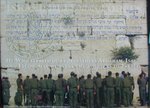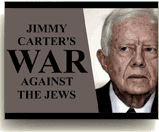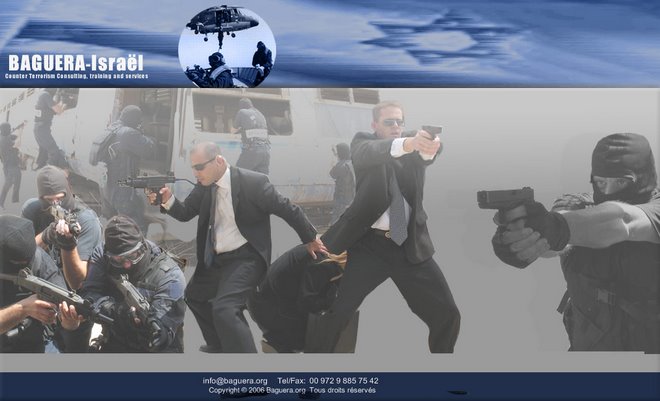by Bruce Hoffman
01.13.2009
1. The fundamental organizing principle of America’s struggle against terrorism as a global war has outlived its utility. Although relevant to the challenge that the United States faced in the immediate aftermath of the September 11 attacks, the term global war on terrorism (GWOT) has increasingly alienated our friends and discouraged our allies. This is particularly so in the Muslim world where the GWOT has unfortunately, and however erroneously, nonetheless become synonymous with a war on Islam. Accordingly, it may be more useful to reconceptualize this struggle in terms of a global counterinsurgency (GCOIN). Such an approach would a priori knit together the equally critical political, economic, diplomatic, information and developmental sides inherent to the successful prosecution of counterinsurgency to the existing dominant military side of the equation.
Greater attention to an integration of American capabilities and instruments of U.S. power would provide incontrovertible recognition of the importance of endowing a GCOIN with an overriding and comprehensive, multi-dimensional, policy. Ideally, this policy would embrace several elements: including a clear strategy, a defined structure for implementing it, and a vision of inter-government agency cooperation, and the unified effort to guide it. A more focused and strengthened interagency process would also facilitate the coordination of key themes and messages and the development and execution of long-term "hearts and minds" programs.
2. The central front in the war on terrorism today is not Iraq, but the lawless border region between Afghanistan and Pakistan. America’s continued preoccupation with Iraq has exacted a heavy price in terms of mounting instability and growing jihadist strength in both South Asian countries. If 9/11 has taught us anything, it is that al-Qaeda is most dangerous when it has a sanctuary or safe haven from which to operate—as it now indisputably does. Indeed, virtually every major terrorist attack or plot of the past four years has emanated from al-Qaeda’s reconstituted sanctuary in Pakistan’s Federally Administered Tribal Areas (FATA) or Northwest Frontier Province (NWFP). Perhaps most important, however, is that the broader movement’s ability to continue to appeal to its hardcore, political base and thus guarantee a flow of recruits into its ranks, money into its coffers, and support for its aims and objectives, ensures that this struggle will neither abate on its own accord nor be easily—and quickly—defeated.
The problem to date is that the United States has no effective political or military strategy for either Afghanistan or Pakistan and appears to treat them separately and not synergistically. Given that the security challenges in both countries are now ineluctably symbiotic, any serious effort to stabilize and secure Afghanistan must begin with a clear and consistent policy designed to achieve the same in Pakistan. Accordingly, the highest priority for the Obama administration must be to refocus our—and our allies’—attention on Afghanistan and Pakistan, where al-Qaeda began to collapse after 2001, but has now regrouped. This will entail understanding that al-Qaeda and its local militant jihadist allies cannot be defeated by military means alone. Success will require a dual strategy of systematically destroying and weakening enemy capabilities—that is, continuing to kill and capture al-Qaeda commanders and operatives—along with breaking the cycle of terrorist recruitment among radicalized "bunches of guys" as well as more effectively countering al-Qaeda’s effective information operations. The United States thus requires a strategy that harnesses the overwhelming kinetic force of the American military as part of a comprehensive vision to transform other, non-kinetic instruments of national power in order to deal more effectively with irregular and unconventional threats.
3. The interagency process is broken and requires fixing. This is as much a matter of a change in mindset as it is bureaucratic reorganization. Success in the campaign against global terrorism and radical jihadism will ultimately depend on how effectively the United States can build bridges and untangle lines of authority, de-conflict overlapping responsibilities and improve the ability to prioritize and synchronize interagency operations in a timely and efficient manner. Organizations will therefore have to do—or be compelled to do—what they have been reluctant to do in the past: reaching across bureaucratic territorial divides and sharing resources in order to defeat terrorists, insurgencies and other emerging threats. Clarifying these expectations and processes is a critical step in efficiently addressing contemporary threats to U.S. security as is creating incentives to more effectively blend diplomacy, justice, development, finance, intelligence, law enforcement, and military capabilities and coherently generating and applying resources to defeat terrorist and insurgent threats.
Arguably, by combating irregular adversaries in a more collaborative and integrative manner with key relevant civilian agencies, those charged with countering terrorism and insurgency can better share critical information, track the various moving parts in terrorist/insurgency networks and develop a comprehensive picture of this enemy—including their supporters, nodes of support, organizational and operational systems, processes and plans. With this information in hand, the United States would then be better prepared to systematically disrupt or defeat all of the critical nodes that support the entire terrorist/insurgent network, thus rendering them ineffective. Achieving this desideratum, however, will necessitate the coordination, de-conflicting and synchronization of the variety of programs upon which the execution of American counterterrorist and/or counterinsurgency planning are dependent. An equally critical dimension of this process will be aligning the training of host nation counterparts with U.S. counterterrorism and counterinsurgency operations: building synergy; avoiding duplication of effort; ensuring that training leads to operational effectiveness; and ensuring that the United States interagency team and approach is in complete harmony. In other words, aligning these training programs with operations to build indigenous capabilities in counterterrorism and counterinsurgency will be absolutely fundamental to the success of such a strategy.
4. Decapitation strategies only work if fully and successfully executed at the onset of a counterterrorism campaign. Accordingly, in tandem with decapitation efforts, continue to emphasize targeting mid-level leaders in terrorist groups. Killing or capturing Osama bin Laden and Ayman al-Zawahiri in 2001 or 2002 would then have dealt a stunning, perhaps even fatal, blow to al-Qaeda. Although it is still absolutely vital to fulfill President Bush’s 2001 pledge to get these killers “dead or alive,” we should be under no illusion that this act in and of itself will now completely stop al-Qaeda. Instead, U.S. counterterrorism strategy should continue to focus on eliminating senior and mid-level al-Qaeda commanders and thus progressively weakening its bench alongside a re-doubled hunt for bin Laden and al-Zawahiri. Mid-level leaders and commanders, in fact, are often more important than top decision makers to the long-term survival of a terrorist organization. Strategies aimed at removing these mid-level leaders more effectively disrupt control, communications, and operations up and down the chain of command. In addition, such strategies may also inhibit a group’s long-term growth by eliminating the development of future leaders. The targeted assassinations in Pakistan of eight key al-Qaeda commanders since July is an example of the proven efficacy of this strategy.
5. Information operations that delegitimize the top leaders of terrorist groups and undermine the image of these groups’ omnipotence is an essential adjunct to kinetic approaches. The top leaders of terrorist organizations are more than just policymakers for the group. They occupy an enormously influential and important symbolic position at the head of a terrorist organization that is often inextricably connected to that organization’s very existence. Therefore focused and sufficiently resourced public diplomacy and information-operations campaigns to discredit these leaders and undermine images of their and their groups’ omnipotence are critical elements in effectively countering terrorism.
6. Focus on disrupting support networks and trafficking activities. In tandem with point five is the effective targeting of essential support and logistics networks. This tactic primarily entails focusing on the middlemen that help terrorist organizations access funds and purchase supplies on the black market: financiers and smugglers. Attention has mostly been focused on front organizations and individuals that provide money to terrorist organizations. However, experience has shown that it would be more advantageous to expand this approach and target specifically the middlemen that, for instance, purchase diamonds from terrorists on the black market, or individuals that sell weapons to terrorist organizations. This tactic is a more effective way of disrupting the everyday activities that a terrorist organization must engage in to maintain its operational capabilities. It hinders the ability of a group to gather resources and plan sophisticated attacks in advance because they cannot rely on a steady stream of money or other essential resources.
7. Knowing the enemy is an essential prerequisite for any successful counterterrorism campaign. “If you know the enemy and know yourself,” Sun Tzu famously advised centuries ago, “you need not fear the results of a hundred battles.” Yet, what remains missing seven-and-a-half years into this struggle is a thorough, systematic and empirical understanding of our enemy: encompassing motivation as well as mindset; decision-making processes as well as command and control relationships; and ideological appeal as well as organizational dynamics. Too often, a “one size fits all” mindset has predominated in our approach to countering what is in fact a diverse, and often idiosyncratic, array of enemies. Indeed, without fully knowing our enemy we cannot successfully penetrate their cells; we cannot knowledgeably sow discord and dissension in their ranks and thus weaken them from within; nor can we think like them in anticipation of how they may act in a variety of situations, aided by different resources. Further, we cannot fulfill the most basic requirements of either an effective counterterrorist strategy—preempting and preventing terrorist operations and deterring their attacks—or of an effective counterinsurgency strategy, gaining the support of the population and through the dismantling of the insurgent infrastructure.
8. Equal emphasis has to be given to the importance of information operations, psychological operations and public diplomacy alongside kinetic approaches. The most effective and lasting counterterrorism strategy will be one that effectively combines the tactical elements of systematically destroying and weakening enemy capabilities (the “kill or capture” approach) alongside the equally critical, broader strategic imperative of breaking the cycle of terrorist and insurgent recruitment and replenishment that have respectively sustained both al-Qaeda’s continued campaign and the ongoing conflict in Afghanistan. Psychological operations that seek not only to kill and capture terrorists or insurgents, but also to persuade them to surrender have a particularly important role in these efforts. Even if the results of such efforts require time to succeed, the suspicion and mistrust sown within terrorist and insurgent ranks might force our enemies to expend more time and energy on watching their backs and monitoring their comrades than in planning and attacking us. The problem is that no agency or office has the lead for overseeing, coordinating and integrating information operations. Multiple agencies share this mission and within those agencies multiple offices claim responsibility: the result is duplication and redundancy and many voices speaking at once rather than one voice with one clear, authoritative message directing this process. Inadequate resources are an additional problem as information operations and public diplomacy remain distinct secondary priorities in the struggle against terrorism.
9. Playing an active and positive role in the resolution of iconic Muslim conflicts will accomplish more, have a greater immediate and long-term impact, and potentially will more decisively improve America’s image in the eyes of the Muslim world than foreign political reform, economic development and agrarian programs applied to individual Muslim countries. The United States needs to be more involved in actively attempting to broker long-term resolutions of the Palestinian-Israeli conflict and the conflict between India and Pakistan in Kashmir. Although foreign aid, American-backed efforts to promote political reform and economic development are important, arguably the most critical and beneficial element of U.S. foreign-policy efforts in countering terrorism is an America that is seen as working for peace in particularly sensitive regions of the Muslim world.
10. Protecting and securing the United States from terrorist attack depends on state and local law enforcement officers who are both the first and last lines of homeland defense. Their familiarity with the communities which they patrol enables these law enforcement officers to observe and detect criminal activity that may indicate a terrorist plot and thus to thwart its commission. American police departments and law enforcement agencies—and especially their street cops and patrol officers—need more and better information about both terrorism and the most effective strategic and tactical responses. The cop on the street, for instance, may likely be the key player in disrupting and preventing a terrorist incident. But to do so, this officer needs training based on the experience and best practices of other jurisdictions, both domestic and international, who have long been involved in countering terrorism as well as the requisite knowledge of terrorist behavior, patterns and modus operandi. Further, officers not only need to know what to look for but that what they are looking for may be a small piece of the larger puzzle that may reveal terrorist connections (e.g., investigations into crimes involving smuggling, human trafficking, fraud, extortion or narcotics that may also be terrorist activities).
11. Terrorism is more than a technical issue and requires a new political relationship between U.S. and European partners. Existing opportunities to learn lessons from respective experiences in counterterrorism and to develop best practices and common approaches with European law-enforcement counterparts are insufficient. Such efforts would improve trust and information flow between those working on terrorism issues on both sides of the Atlantic. The United States and Europe have a strong common interest in countering terrorism, especially from Islamist groups like al-Qaeda. In addition, our European law-enforcement counterparts already have long experience in combating homegrown terrorist threats and more recently acquired knowledge in countering Islamist threats. This confluence of interests provides the foundation to establish new political and counterterrorism relationships between the United States and Europe, and further build trust and cooperation and facilitate the exchange of information, through a broader and more coordinated program of secondment and exchange of law-enforcement officers.
12. NYPD (New York Police Department) has played a leading role in facilitating cooperation with international partners on counterterrorism issues, but current federal efforts to broaden these programs and make them available to other jurisdictions on a national basis are as inchoate as they have been inadequate. Unlike many other countries, such as the United Kingdom and Israel, terrorism is not necessarily a daily issue for the U.S. law-enforcement officer. For that reason, American law enforcement requires regular awareness and education programs to keep pace with the terrorism threat and the knowledge needed to prevent, preempt or respond to an incident. Sufficient funding and resources should be provided to establish a program whereby state and local law-enforcement officers could be deployed to overseas locations to observe the operations of foreign jurisdictions long involved in counterterrorism and with more recent experience in countering Islamist threats. Such deployments would enhance the knowledge of American officers, identify best practices and assist in the development of policies, practices and procedures relevant to U.S. law enforcement that could be adopted or emulated here. A parallel program could bring foreign law enforcement officers from key overseas jurisdictions to the United States on similar secondment assignments that would further enhance international-counterterrorism law-enforcement cooperation and promote the identification and exchange of lessons learned.
Conclusion
In sum, the current threat environment posed by terrorism and insurgency makes a new strategy, approach and new organizational and institutional behaviors necessary. The nontraditional challenges to U.S. national-security and foreign-policy imperatives posed by elusive and deadly irregular adversaries emphasizes the need to anchor changes that will more effectively close the gap between detecting irregular adversarial activity and rapidly defeating it. The effectiveness of U.S. strategy will be based on our capacity to think like a networked enemy, in anticipation of how they may act in a variety of situations, aided by different resources. This goal requires that the American national security structure in turn organize itself for maximum efficiency, information sharing, and the ability to function quickly and effectively under new operational definitions. A successful strategy will therefore also be one that thinks and plans ahead with a view towards addressing the threats likely to be posed by the terrorist and insurgent generation beyond the current one.
Bruce Hoffman is a contributing editor to The National Interest and a professor at Georgetown University’s School of Foreign Service. He is also the author of Inside Terrorism (2006).
































 While doing IDF (Israel Defence Forces) reserve duty on a mountain overlooking the
While doing IDF (Israel Defence Forces) reserve duty on a mountain overlooking the 





The Best mohammed T-shirt art is from Sweden. Watch and read the info at,
ReplyDeletehttp://www.mohammedt-shirt.com
And allah will help the muslims. HA HA HA HA